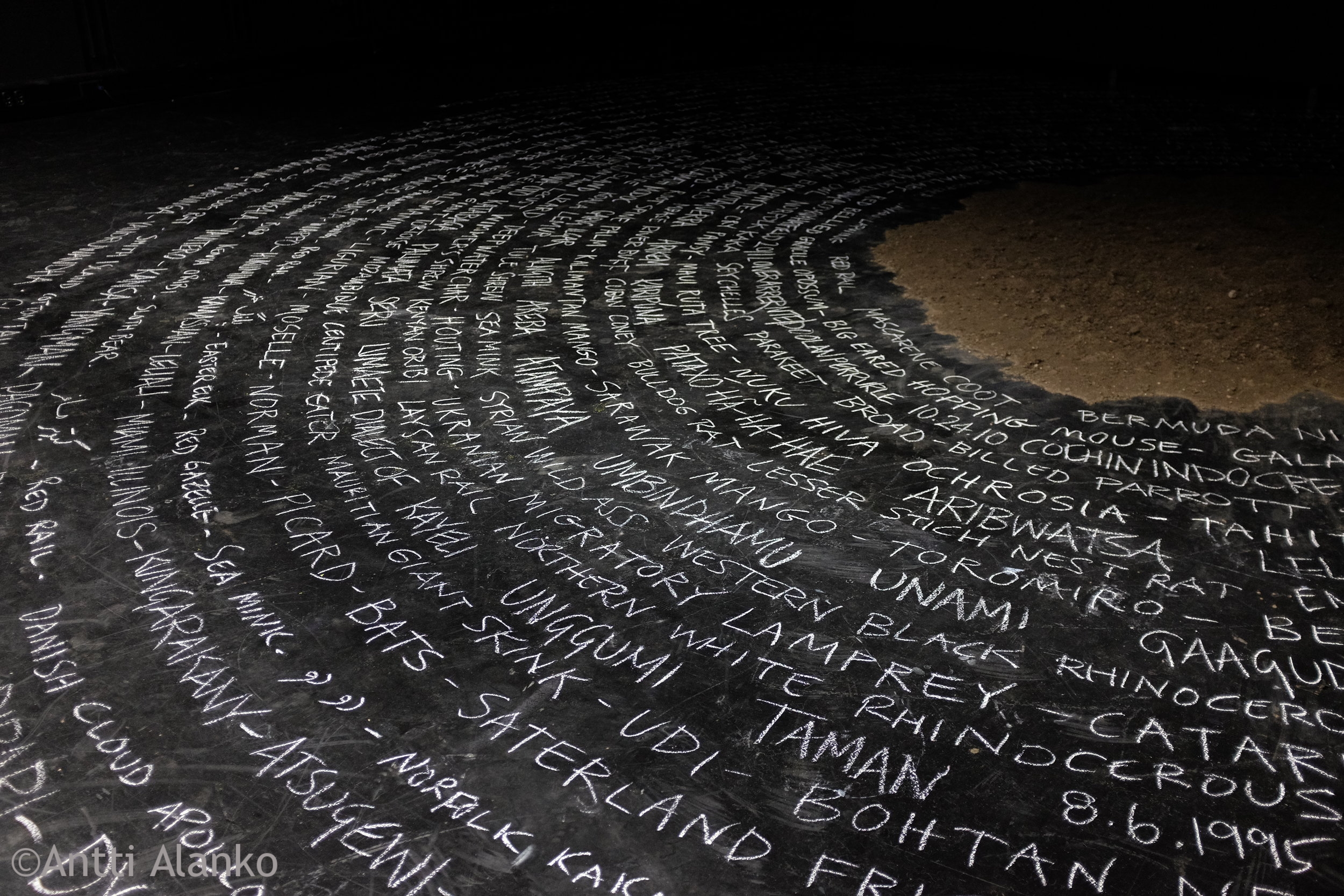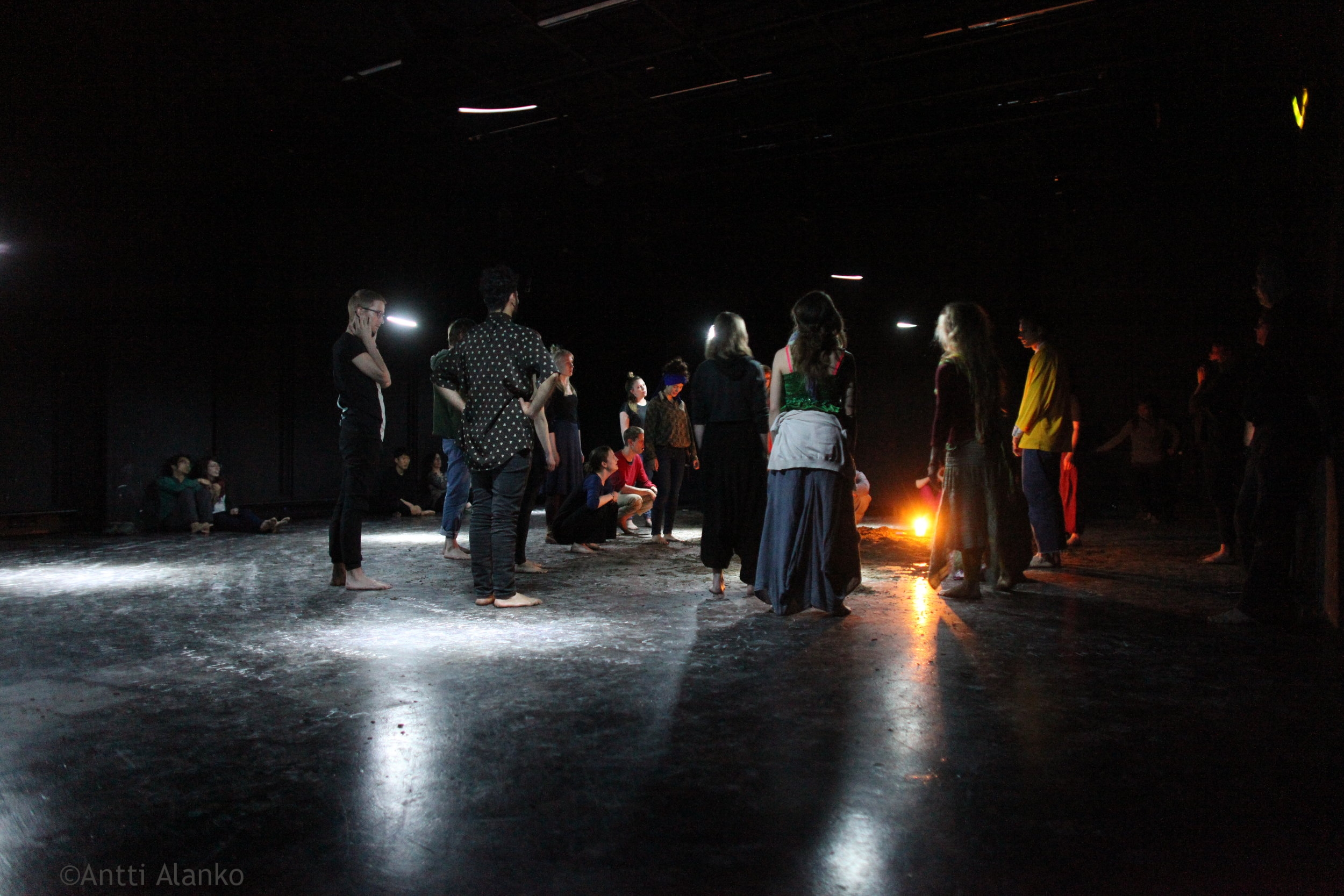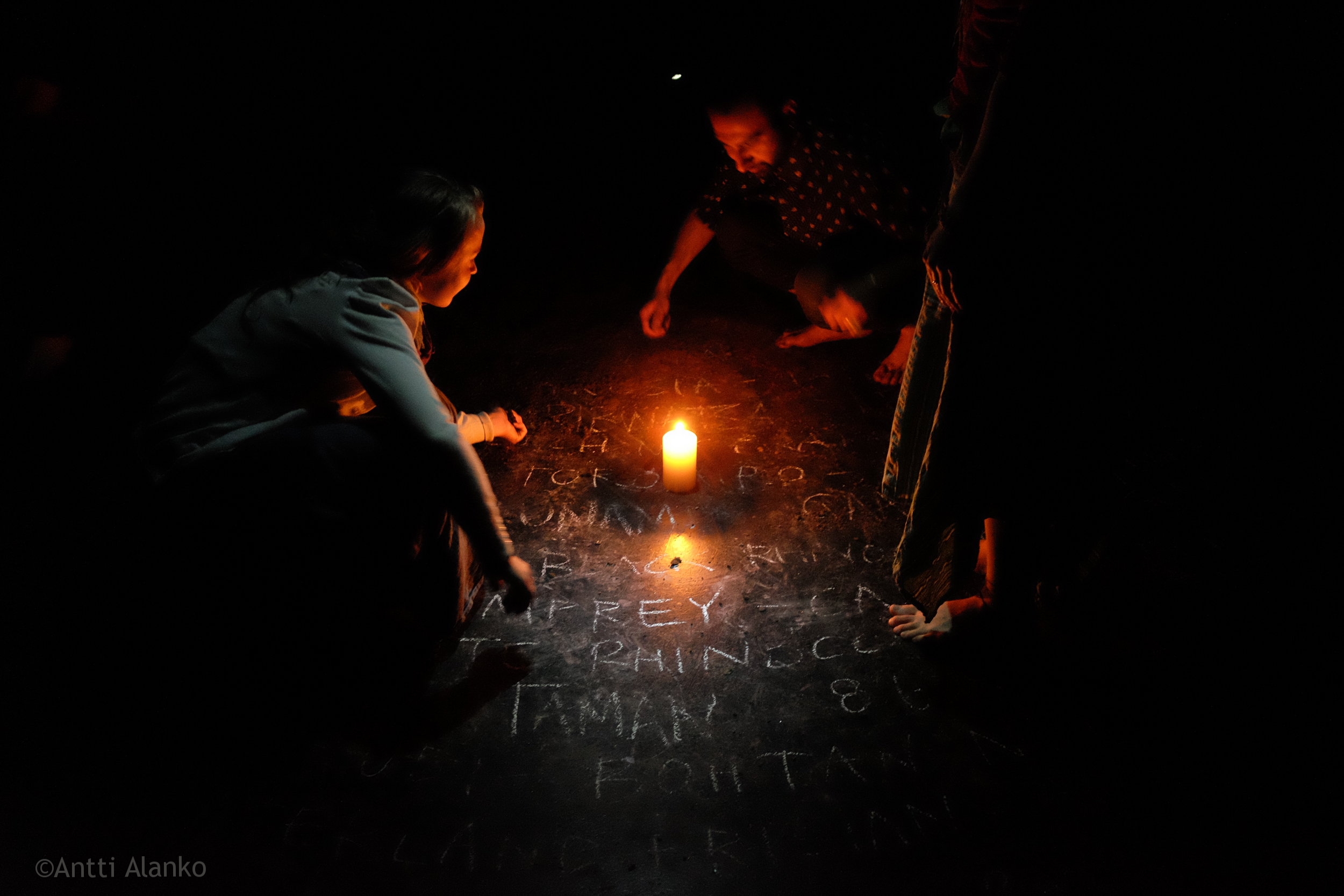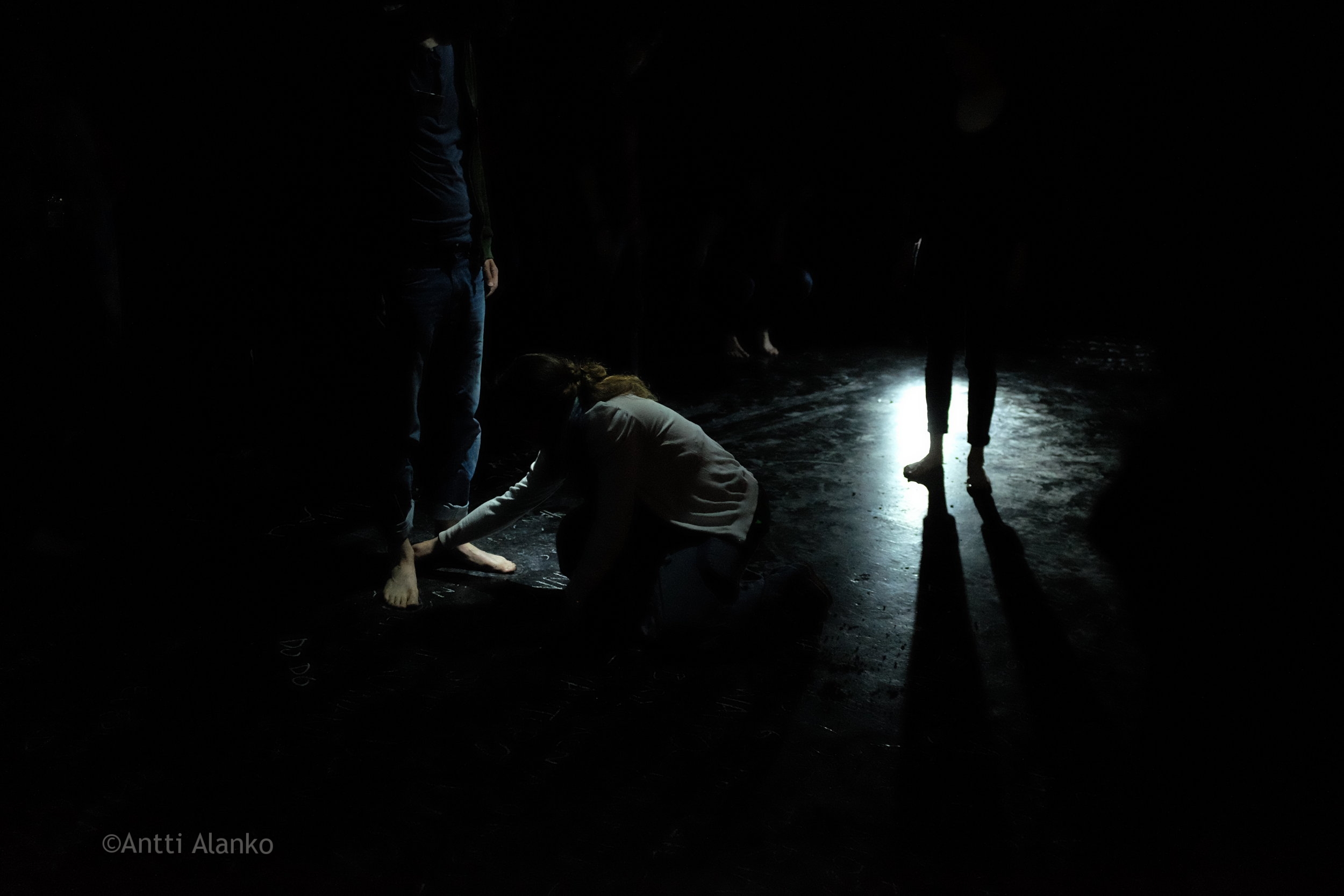
ECOSOMATICS
““You didn’t come into this world. You came out of it, like a wave from the ocean. You are not a stranger here.””
Ecosomatics has been emerging out of the somatic field as a named body since around 2007. The term found me at that time, when I was also struggling with my reasons to dance, to perform for an audience - or to do any kind of art at all. Many years before that, I had begun to research how to integrate ecological perspectives into somatics, as a natural expansion of my own work and studies. Ecosomatics gave a name to something I had been playing with for a long time, but the first workshops were taught starting in 2011 in the Theatre Academy of Helsinki, whom generously provided me with the platform to keep exploring the work further as part of the MA program in Ecology & Contemporary Performance, and as part of the Open University studies. While the term has since exploded exponentially - in meanings as well as usage - I was among the first people to use it to describe my work, and the first person to introduce the term in Finland, and into the field of performance art as part of my MA thesis on participatory performance making. Ecosomatics has been since added to the teaching curriculum of the Swedish speaking Acting program of the Theatre Academy of Helsinki, where I teach it in the Masters program.
But just to be clear, I feel the work has always been there, as a way to guide us back home, through our bodies onto the earth. I’m deeply indebted to people like Anna Halprin, who was the first person I heard suggesting that perhaps dance could - not just talk about climate change - but have an affect on it. Andrea Olsen wrote a book “Body and Earth” in 2002, another essential light bulb-moment in my process. And then of course the work that reconnects by Joanna Macy, which so beautifully combines Buddhist practice with systems theory and deep ecology. And naturally, it is there in the indigenous wisdom, in their rituals and practices. It is in the re-cognition that our health and well-being is not separate from the well-being of our environment. What happens to the Tasmanian Tigers, Tecopa Pupfish, Hoverflies, bats, bees and earthworms, has an impact on all of us. And that impact is psychological as well as physical.
In my three decades of learning, teaching and living somatic work, the step into ecosomatics developed organically. The prefix is a reminder of the continuum within which our sentience evolved, and without which we would not exist. The shared aspects of ecology and somatics are awareness of relationships, patterns and change. The small shift from somatics to ecosomatics is to extend our perspective from human life to all life, from human movement to all that moves, breathes, lives. These small shifts are perceptual. My breathing is a dialogue with the trees and the plants. That breath is a living exchange at the cellular level, where the notion of "me" both evaporates and unfolds. This inner/outer exchange of oxygen and carbon dioxide is an on-going act of balance between me and the other, a movement through which I live into the interdependencies of complex systems. And at the same time, in all of its complexity, I can still rest into the breath, allowing it to take place, unhindered by my thoughts.
A lot of our pain, depression, sense of isolation comes from a loss of contact with the natural forces. Our nervous systems and hormonal systems are on overload, creating further chaos, stress and lack of resilience. Sustainability is a somatic theme as much as an ecological principle.
In my work ecosomatics seeps in through the desire to keep re-contextualizing our somatic practices with the larger issues we face in the world. Ecosomatics for me is about engaging with complex questions and challenging conversations with an embodied self. And these times require the participation of many. With diversity of experience around a given subject, we may glimpse more than just our own images reflected back. A practice of ecosomatics is an act of rewilding, protecting and restoring our natural resources for introspection, communication and action.
In my teaching I focus on developing depth perception through embodied explorations in evolution, embryology, immunology and subcellular aspects, research which is greatly influenced by my studies in Body-Mind Centering®. I wish to evoke the innate agency of our cells/selves, recognize our deep interconnectedness with our environment and stretching our perceptual abilities, our choice making abilities, returning to a deeply felt connection with our tissues and the world.
In short - Ecosomatics is my prayer and my practice. There are no set answers, no knowns.
But there are the tissue of the body, the intelligence of the cells and the molecules of water, flowing through all forms of life. Tracking these aspects sensorially within myself and others can lead us to places of deeper connectivity.
There we can begin to heal.
“This course opened up so many perspectives that I would never have dreamed of. The Ecosomatics course has been one of the most impressive, if not the most impressive course of my entire studies at the University. At the beginning of the course I was exhausted and wondered if I had the strength to participate, but the supportive and gentle way in which Satu welcomed us and the atmosphere that was present throughout the course was extremely empowering and inclusive.
Satu’s teaching is fascinating to follow and her situational awareness is
phenomenal. The whole is made up of many details of learning, one of which was an insight into the porosity of the human body and mind, the motor action of thought and how everything is connected. The balance between lectures and activity is captivating. This is related to Satu’s ability to read the situation, where the group is going, what it needs at any given moment, etc.
This course has been an exhilarating experience.
Deep gratitude.
”
Bewilderment Project, 2015. Images © Antti Alanko
Bewilderment Project was held within the Ecosomatic framework, and created together with poet/healer Laressa Dickey and artist/activist Julia Metzger-Traber. The participatory event/performance was a creative response to the sense of urgency that we collectively shared, prompting us to provide a space for grief and loss around the extinction of diversity; be it species, plants, languages, spaces or places of origin.





